Panamanian Food: Basic Overview
Common Ingredients
Common Cooking Methods
Courses
Meals
Key Taste
Eating Etiquette
Meal Presentation
Culinary Festivals
Influence and Fusion
Popular Types of Panamanian Food
-
Soups and Stews
These dishes range from brothy to thick and can include a variety of ingredients such as chicken, beef, seafood, and a mix of root vegetables and herbs.
The preparation often involves slow cooking, allowing the flavors to meld together beautifully.
Notable is the use of local ingredients like yam, maize, and culantro, which contribute to the unique taste profile of these dishes.
-
Fried dishes
Fried dishes in Panamanian cuisine often start with simple, staple ingredients like plantains, yuca, or dough.
The twice-fried plantains, known for their perfect blend of crunchiness and subtle sweetness, are a classic example.
-
Bread and doughs
Bread and doughs vary from thick, corn-based tortillas to fluffy, fried bread like hojaldres.
These staples are versatile and can be enjoyed at any meal, serving as a base or accompaniment to other dishes.
The unique preparation methods, such as deep-frying or baking, give these bread and doughs distinct textures and flavors, from crispy to soft and dense.
-
Desserts
Desserts in Panamanian cuisine are an exploration of sweet, creamy, and fruity flavors, often incorporating local fruits, dairy, and traditional techniques to create indulgent treats.
These sweets range from the moist, milk-soaked tres leches cake to the unique textures and tastes of desserts made with nance fruit or coconut.
Panamanian dishes are delicacies widely enjoyed in Panama, a country nested in Central America. The cuisine of Panama is influenced significantly by its multicultural history, including Native Panamanian cultures, Afro-Caribbean cuisine, African specialties, and Spanish culinary gems.
Key to the Panamanian diet is seafood, particularly ceviche, and staples like Sancocho, a hearty chicken stew considered the national dish. Ingredients common in many meals include corn, rice, and beans, showcasing indigenous culinary influences.
The flavors of Panamanian food balance sweet, savory, and spicy, with fresh herbs, spices, and aji chili peppers as essential seasonings.
Cooking methods are diverse, emphasizing boiling, grilling, and frying with fresh, local ingredients. Beyond the food, Panamanian cuisine embodies the country’s social and cultural fabric, with meals as a focal point for gathering and celebration.
In addition to exploring Panama’s most beloved dishes, I’ve uncovered what defines traditional Panamanian food, what makes its food so appealing globally, and the secrets to its healthiness. Plus, there’s insight into dining etiquette and how to pair dishes with beverages perfectly.
Dive in, and let’s start discovering now!
23 Popular Panamanian Dishes with Filters
Here are the best 23 Panamanian dishes, sorted according to their popularity. You can use the filter function to filter through ingredients, flavors, cooking styles, types of dishes, and when they’re best enjoyed.
From cherished traditional meals and beloved national dishes to exciting new fusions and unique street eats, there’s something for every taste.
A delicious testament to Panama’s cultural melting pot, these dishes blend traditional Panamanian flavors with international influences.
Sancocho
- National
- Traditional
Sancocho is a national Panamanian stew known for its hearty and comforting qualities. Typically, it features chicken, yam, maize, culantro (a robust herb akin to cilantro), and assorted vegetables.
Variations of Sancocho can be found across Latin America, but in Panama, the most famous version is Sancocho de gallina, made with free-range chicken.
This dish is especially popular during the rainy season and is a staple at major festivals and celebrations, including the Fiestas Patrias (National Festivals) and family gatherings.
Ceviche
- Fusion
- Street Food
Ceviche, also known as cebiche, seviche, or sebiche, is a fusion dish within Panamanian cuisine that consists of fresh raw fish or seafood marinated in citrus juices, primarily lime or lemon, and spiced with chili peppers.
Onions, salt, and cilantro enhance the flavors, creating a refreshing, acidic, and slightly spicy dish. In Panama, ceviche is a street food delicacy and a sophisticated appetizer in upscale restaurants.
Variations of ceviche include those made with shrimp, octopus, or sea bass, reflecting the diversity of Panama’s marine life.
Panamanian ceviche is distinguished by its blend of flavors and popularity at social gatherings and festive occasions, such as the Carnival and seafood festivals.
Arroz con Pollo
- Traditional
Arroz con pollo, which translates to “rice with chicken,” is a Panamanian dish that combines tender chicken pieces with rice seasoned with herbs, spices, and vegetables.
The dish is colored with annatto or saffron, giving it a distinctive yellow hue. Often served at family events and holidays, and especially notable during national celebrations like Independence Day, this dish is a staple of Panamanian festivities.
Tamale
- Street Food
- Traditional
Tamale, a traditional dish in many Latin American countries, is special in Panamanian cuisine. It’s made by steaming corn dough filled with meats, vegetables, and spices wrapped in banana leaves.
Preparing tamales is often a communal activity, bringing families and friends together, particularly around Christmas and New Year’s celebrations.
Patacones
- Street Food
Patacones are twice-fried plantain slices that offer a crunch and a mildly sweet yet savory flavor. Originating from green (unripe) plantains, these slices are fried, flattened to increase their surface area, and fried again until they achieve a crisp, golden-brown exterior.
This method enhances their natural flavors, making patacones a beloved side dish or snack in Panama and beyond.
Customarily seasoned with just a sprinkle of salt, they are often enjoyed with dips such as mojo (a garlic sauce) or topped with ingredients like shredded beef in various Latin American countries.
Empanada
- Fusion
- Street Food
Empanada is a versatile staple in Latin American cuisines, including Panama’s. These stuffed pastries can be baked or fried and are filled with various ingredients, including meats, cheeses, vegetables, or even sweet fillings.
Filled with flavorful ingredients, the dough is typically made from corn or wheat. In Panama, empanadas are a popular snack or meal component, embodying the fusion aspect of the cuisine with their blend of Indigenous, Spanish, and African influences.
Yuca Frita
- Street Food
Yuca frita is a beloved side dish in Panamanian cuisine, often enjoyed for its crispy exterior and soft, starchy interior. Made from fried cassava, this dish is a staple both in Panama and across Latin America. It’s akin to French fries but with a tropical twist.
It’s commonly served with dipping sauces, ranging from simple mayonnaise to ketchup. Its popularity extends beyond Panama, making it a familiar sight in Caribbean, South, and Central American cuisines.
Ropa Vieja
- Traditional
Ropa vieja, which translates to “old clothes,” is a dish rich in history and flavor, symbolizing the fusion aspect of Panamanian cuisine.
With roots in Spanish colonial history, this dish features shredded beef, slow-cooked in a tomato-based sauce with onions, peppers, and a mix of spices.
Ropa vieja is not only a traditional dish but also a national favorite in Panama, with variations found in other Latin American countries, particularly Cuba, where it is also considered a national dish.
It’s a dish that brings families together, especially on Sundays or special occasions. Its fame has spread to other regions, with variations of Ropa Vieja enjoyed in parts of the United States, especially within Cuban and Panamanian communities.
Tres Leches Cake
- Traditional
Tres leches cake is a dessert known for its moist and sweet nature. Originating in Latin America, it holds a special place in Panamanian dessert culture.
This cake, literally translating to “three milks cake,” is soaked in a mixture of three kinds of milk: evaporated, condensed, and heavy cream.
Variations of this dessert include adding fruit, chocolate, or nuts to cater to different palates. Its sweet, creamy taste makes it popular for celebrations and gatherings, especially during birthdays and weddings.
Tamal de Olla
- Traditional
Tamal de olla, distinct from the more widely known wrapped tamales, is a traditional Panamanian dish that translates to “pot tamale.”
This hearty and savory fusion dish combines typical tamale ingredients and flavors in a casserole form, cooked and served straight from the pot.
Unlike its wrapped counterparts, Tamal de olla is a family meal, often gathering people around the table for a communal experience.
It’s particularly favored during festive seasons and significant celebrations, such as Christmas and Independence Day gatherings.
Arroz con Camarones y Coco
- Fusion
Arroz con Camarones y Coco is a flavorful Panamanian seafood dish, blending coconut’s tropical taste with shrimp’s fresh zest.
This dish is often celebrated as a fusion of the Caribbean and Panamanian culinary traditions. Arroz con Camarones y Coco is enjoyed year-round but finds special significance during festive occasions.
Pernil de Puerco al Horno
- Traditional
Pernil de Puerco al Horno is a Panamanian dish featuring slow-roasted pork leg or shoulder marinated in a rich blend of spices and herbs. This dish is celebrated as a centerpiece during significant celebrations, most notably Christmas and New Year’s Eve feasts.
The pernil’s taste is profoundly savory, with the meat’s tenderness and the crispy skin achieved through hours of slow roasting, ensuring every bite is infused with the marinade’s aromatic flavors.
Tortillas
- Street Food
- Traditional
Panamanian tortillas are thick, corn-based flatbreads, often enjoyed as a hearty base or accompaniment to many daily meals. Unlike the thin, pliable Mexican tortillas, Panamanian tortillas are deep-fried or baked, offering a crispy exterior and a soft, dense interior.
They can be served plain or topped with cheese, meats, or eggs. The flavor is predominantly that of corn, with a rich and satisfying texture that complements a variety of toppings and fillings.
Hojaldres
- Traditional
Hojaldres (also known as Hojaldras) are traditional Panamanian fried bread made from a simple dough of flour, baking powder, sugar, salt, and water, then deep-fried until golden and puffy.
Hojaldres can be enjoyed with toppings like cheese, fried eggs, or even a savory sausage stew known as salchichas guisadas.
Carimañolas
- Street Food
- Traditional
Carimañolas are a traditional type of fried food found in Panamanian cuisine, also popular in parts of Colombia.
This dish consists of a meat-filled yuca fritter, where the yuca or cassava is mashed and formed into an oblong shape, then stuffed with seasoned ground meat, typically beef, chicken, or pork, along with possible additions of cheese or boiled egg.
While carimañolas are enjoyed throughout the year, they are particularly popular as a breakfast or snack.
Bollo
- Street Food
- Traditional
Bollo in Panamanian cuisine refers to corn-based doughs cooked and wrapped in leaves, typically corn husks or banana leaves.
The dish can be savory or sweet, with variations including bollo de maíz nuevo (fresh corn bollo), bollo preñado (stuffed bollo with meat), and bollo de yuca (cassava bollo).
Bollos are enjoyed for their soft, moist texture and the subtle flavors imparted by the leaves during cooking.
This dish is special in Panamanian festivities and is particularly prominent during traditional celebrations and holidays, such as the Fiestas Patrias (National Festivals) and religious observances.
Tasajo
- Traditional
Tasajo in Panama usually refers to beef that has been cured and then cooked until tender, offering a distinctive, rich flavor profile that’s both savory and slightly salty.
Making tasajo involves marinating the beef in a blend of spices and then drying or smoking it, which imparts a unique taste and texture.
Tasajo can be a main course, often accompanied by sides such as rice, beans, or root vegetables. Its robust flavor and hearty nature make it especially popular in rural areas and among those seeking traditional Panamanian meals.
Almojábanos
- Street Food
- Traditional
Almojábanos is a traditional Panamanian snack comprising cheese-infused rice flour fritters, known for their crispy exterior and soft, chewy interior.
Almojábanos boasts a subtly savory taste, enriched by the cheese woven into their dough. Enjoyed as a breakfast or midday snack, they glimpse Panama’s everyday culinary delights.
Sopa de Pata
- Traditional
Sopa de pata is a traditional soup in Panamanian cuisine made primarily from cow’s feet, yuca, and ñame (a type of root vegetable similar to yams).
The soup is known for its gelatinous consistency, attributed to the slow cooking of cow’s feet, and a depth of flavor that’s both savory and slightly earthy.
Mondongo a la Culona
- Traditional
Mondongo a la Culona is a traditional, flavorful Panamanian soup made with cow’s tripe and a mix of vegetables like bell peppers and onions. These slow-cooked ingredients create a thick, rich soup with a complex flavor profile of earthy, savory, and slightly spicy notes.
This soup is a staple at gatherings, symbolizing communal warmth, and enjoys popularity across Latin America, with each region adding its twist.
Pesada de Nance
- Traditional
Pesada de Nance is a cherished traditional dessert in Panamanian cuisine, crafted from the small, yellow-nance fruit.
This dessert, characterized by its thick, custard-like consistency, combines the tartness of the nance fruit with the sweetness of sugar and the creaminess of milk.
Pesada de Nance is especially popular during the nance fruit season. She is often enjoyed at family gatherings and local celebrations.
Cocada
- Street Food
Cocada is a coconut-based confection of Panamanian cuisine. This dessert is made by simmering grated coconut in sugar until it reaches a sticky, fudgy consistency, often flavored with vanilla or spices like cinnamon.
Cocadas come in various forms, from soft, chewy bars to more hardened, candy-like versions.
While cocadas are widely enjoyed across Latin America in various forms, in Panama, they are particularly beloved as a simple yet satisfying treat, often found in local markets and street food stalls.
Sopa Borracha
- Traditional
Despite its misleading name, Sopa borracha, or “drunken soup,” is a traditional Panamanian dessert significant in celebrations like weddings and national festivities.
It’s a sponge cake drenched in a sweet, aromatic syrup of dark rum or sherry, sugar, and cinnamon, often enhanced with raisins and decorated with prunes and cherries.
The dessert combines the warmth of cinnamon, the sweetness of the syrup, and the rich flavors of rum or sherry into a moist, indulgent cake.
What Is Panamanian Dining Etiquette?
Here’s an overview of typical Panamanian dining etiquette:
Understanding these dining customs paves the way for appreciating how specific beverages can enhance the flavors of Panamanian cuisine, creating a harmonious dining experience.
Which Beverages Best Complement Panamanian Dishes?
Here are some beverages that best pair with Panamanian dishes:
Remember, the best pairing depends on the dishes you enjoy and your preferences. Experimenting with different Panamanian drinks can lead to delightful discoveries!
I value and cherish your thoughts very much, so don’t hesitate to leave a comment and tell me what you think. It would be great if you could share this post with your friends and loved ones to popularize the richness of Panamanian cuisine. Many thanks and bon appétit!


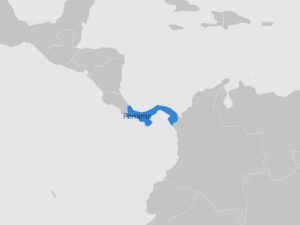
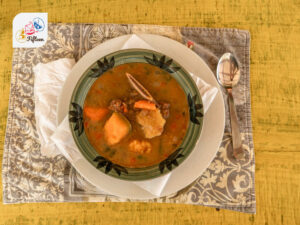
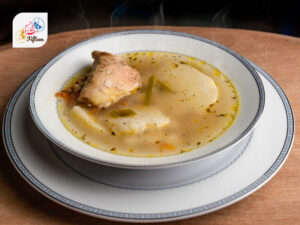
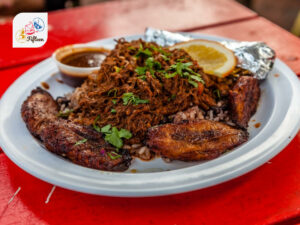
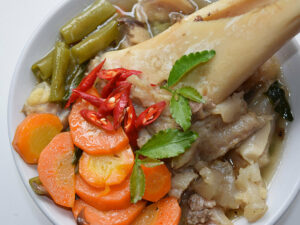
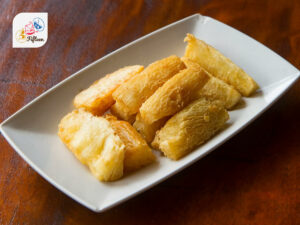
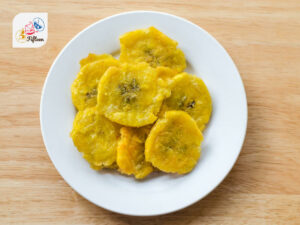
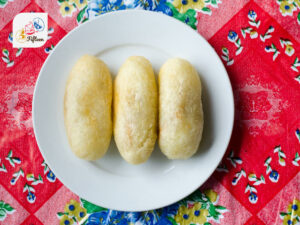
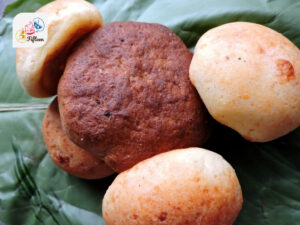
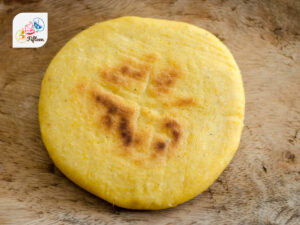
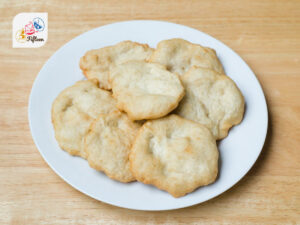
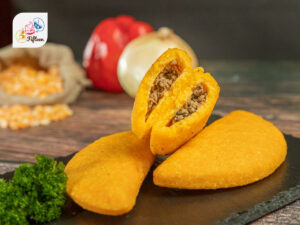
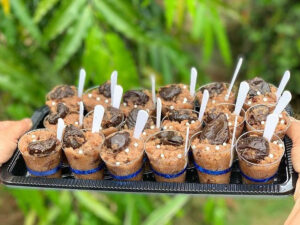
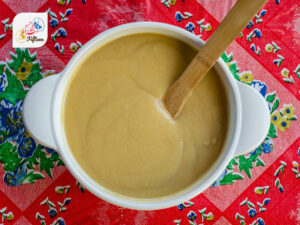
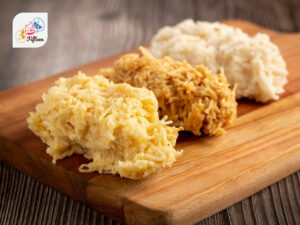
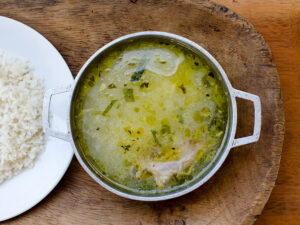
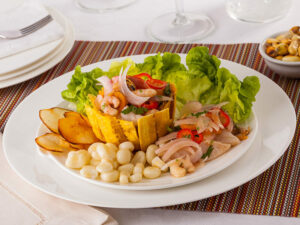
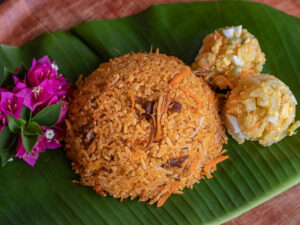
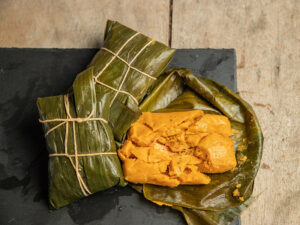
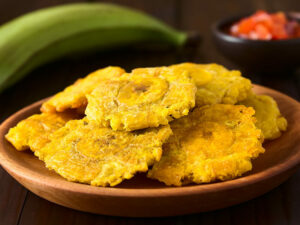
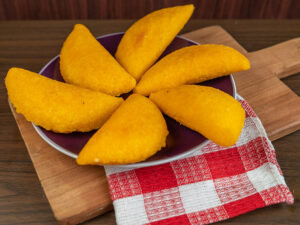
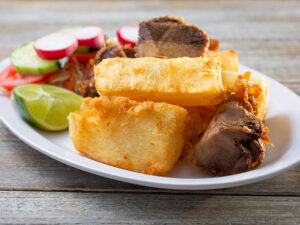
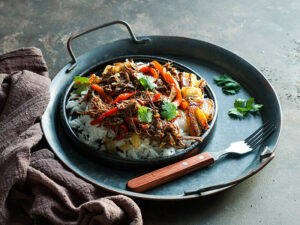

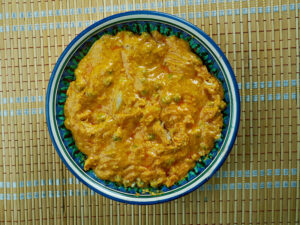
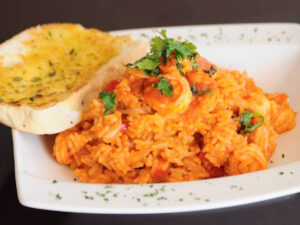
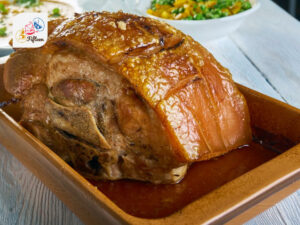
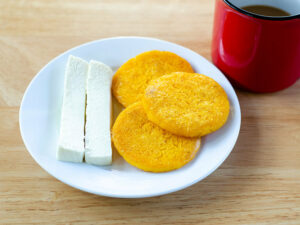
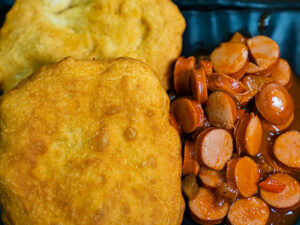
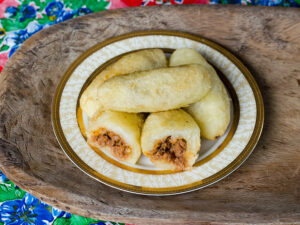
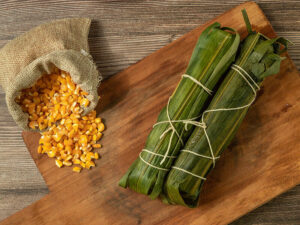
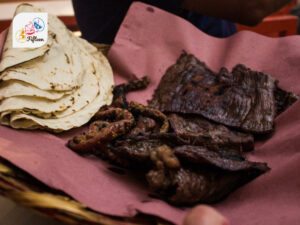
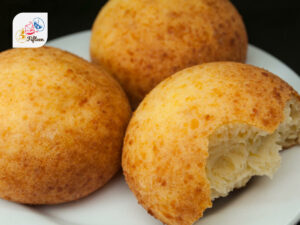
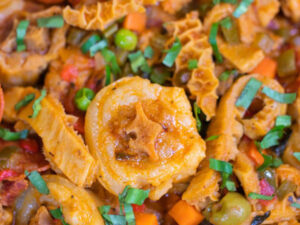
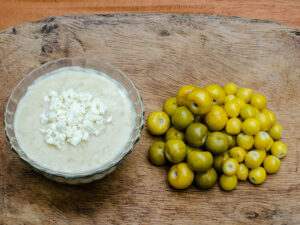
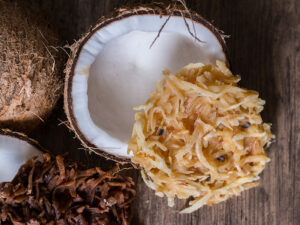
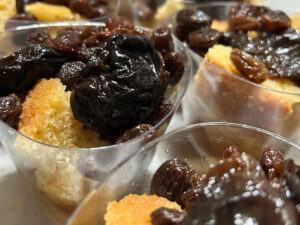
Jamie Scott
Editor in Chief, Senior Content Writer
Expertise
Home Cooking, Meal Planning, Recipe Development, Baking and Pastry, Food Editor, Cooking-video Maker, Western Food Evaluation Expert
Education
Le Cordon Bleu College of Culinary Arts
Local Community College, New York, NY
Jamie Scott is a skilled culinary expert and content creator specializing in Western cuisine. With over 15 years in the culinary field and formal training from Le Cordon Bleu, Paris, Jamie deeply understands how to blend nutrition with delicious flavors. His passion for cooking matches his commitment to making healthy eating accessible and enjoyable.
On Fifteen.net, Jamie brings a fresh perspective to classic dishes and beverages, offering readers insightful recipes, cooking tips, and a fresh view on meal planning that emphasizes taste, health, and simplicity.